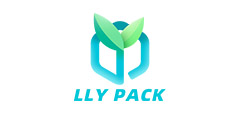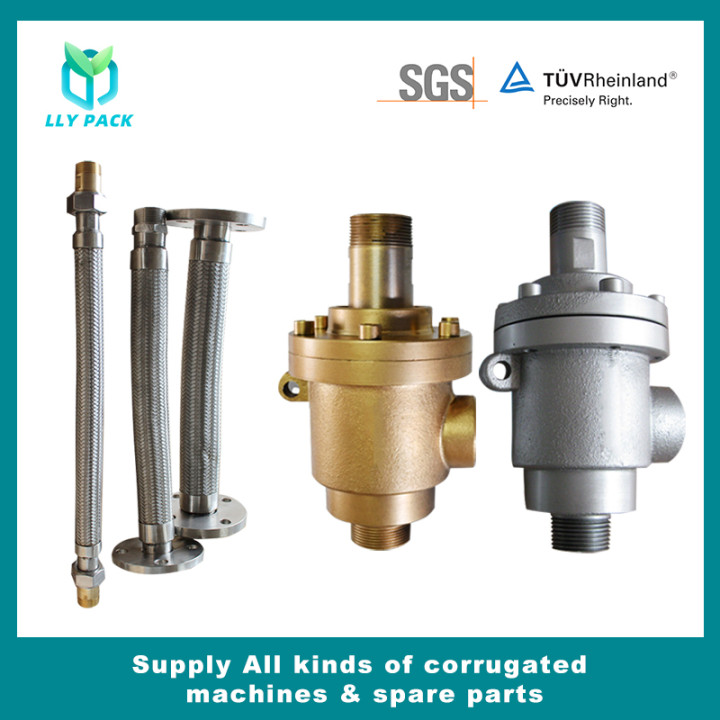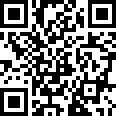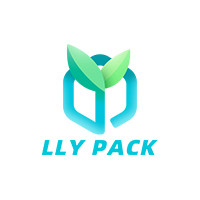The overall design level of domestic corrugated cartons is relatively low. In particular, there are very few carton pattern designers who have rich theoretical knowledge of corrugated carton packaging and practical experience in the corrugated carton flexographic printing process. The development of corrugated carton samples cannot be correct. Analyze the hierarchy order of graphic color printing and reasonably determine the number of screen lines of the printing plate. Therefore, the problem of corrugated carton printing caused by the graphic design and the unreasonable production of the flexographic plate sometimes appears. The printing problems caused by this kind of situation have a great deal of concealment and it is difficult to determine the problem. But also affect the carton pattern and printing effect, let's talk about how to pay attention to matters in graphic design and flexo plate making.
Graphic design considerations
Try to avoid full printing
The design of corrugated box design must first avoid full-plate printing in water-based flexographic printing presses, because the corrugated box is designed to be full or printed around, because the embossing roll is completely in contact with the corrugated cardboard, and the pressure between the printing plate and the pressure roll is The compressive strength of corrugated board is greatly damaged, and the infiltration of paper by a large area of ink also reduces the compressive strength of the carton. The physical performance index of corrugated boxes after full-printing is reduced by about 30%. Therefore, the design of the corrugated box should be as simple as possible, and as far as possible to avoid printing the text on the entire surface of the corrugated box layout, but not full version printing. If there are some cartons that require full-screen printing, the number of color groups cannot be large, and it should be noted that the pressure of printing is as small as possible under the premise of ensuring the printing effect. When printing large quantities of cartons, other printing processes should be selected. The application of corrugated box pre-printing process in domestic corrugated box industry is the ideal solution for full-plate printing, and it can achieve accurate multi-color overprinting.
Reduce the number of overprints
The more the registration times, the more severe the compressive strength of the carton is, so the number of overprints should be minimized. In particular, the smaller pattern and precise overprinting, because the water-based ink on the corrugated box surface infiltration will seriously affect the effect of overprinting edges, especially when offset printing carton products for water-based flexible printing, should be according to the water-based flexographic printing process for the corresponding change in the overprint color . Pursuit of green packaging, saving packaging is an active advocacy of many international companies, simple, bright and creative design patterns can not only express the information of packaging products, but also save packaging resources and reduce production costs. Therefore, in many corrugated cartons product packaging reduces the number of overprints, the physical properties of corrugated carton packaging greatly improved. On the other hand, the number of overprints is large, and the color reproduction effect on the corrugated boxes is not very good. The production costs of the overprinted cartons are also high.
Avoid small letters
It is not a problem to make smaller texts on flexible resin plates, but corrugated cartons should try to avoid printing small letters from the standpoint of the effect of promoting goods. Such as the size of 2cm below the text, generally at a distance of 5m or more is almost unclear, so it will lose the significance of promoting the promotion of goods. The number of printing jobs for smaller texts will also be greatly reduced, and printing operations will be more difficult to handle. The pressure of printing is light and the text is lighter. Increasing the pressure of printing on the one hand will lead to distortion of the dots and obvious “edge effect” on the characters and lines. On the other hand, the corrugated structure will be damaged and the strength of the carton will be reduced. Therefore, carton graphic design to avoid small print.
Avoid banding (ie, the same direction as corrugated board machinery)
Some cartons have transverse gradient lines on the pattern. This area of the cartons is most easily broken due to stress, and the printing pressure will crush the corrugations. Therefore, band printing should be avoided.
Choose inks with large color saturation and strong coloring power
For some carton samples of relatively bright colors, the color of ink required to be eye-catching. Because the color of the corrugated cardboard itself is quite dark, inks with large color saturation and strong coloring power (such as large red) should be used as far as possible, otherwise the printed colors may differ greatly from the desired colors. It is considered unrealistic to think that the color of the proofs will be the same as the ones you see on the monitor or the samples printed by the inkjet.
Relaxation of pressure range of flexible board to corrugated board
When designing a pattern with small gradient dots, the layout of the printing plate should be considered to be high, and the color of the external plug network should be light color. In the design of flexographic screens, we must consider the factors of press accuracy. We should relax the pressure range of the flexographic version on the corrugated board, and reasonably select the ratio of the number of printed copies to the number of anilox rolls.
Reasonably designed opening style
The position of the handle hole on the carton should be designed as far as possible in the middle position, and a reasonable opening type should be considered in the design.
Avoid the difference of printing patterns of the same layout
Carton layout should avoid the printing of large areas on the same plane as the screen.
Considering flexible plate elastic deformation
Due to the elasticity of the flexographic plate, after being mounted on the plate cylinder, the plate will undergo bending deformation in the circumferential direction of the cylinder, and hardly deform in the axial direction of the cylinder. This deformation changes the size of the printed graphic. For higher-demand prints, measures must be taken to compensate. The best way is to change the size of the text on the printing film. If you have a circular pattern on the original, you can use the deformable mirror to take a picture with a good compensation factor. The compensation coefficient is the reduction factor of the printing film, that is, the percentage of the printing paper size of the printing film should be reduced in the printing direction.
Ensure consistent sample product
The graphic design should keep the same sample when outputting, avoiding the difference in the output of different printers and causing difficulties in inspection and judgment.
Flex Edition Note
Flexo is a critical material that affects the print quality of corrugated cartons. Therefore, careful attention must be paid to the selection of media and the printing plate production and installation.
Selection of printing plates
The printing plates of carton printers usually use rubber plates and flexible resin plates (including domestic or imported), and there is a certain gap between the elasticity and the ink-holding capacity of the two. Usually, the flexibility and ink-holding capacity of the flexible resin plate are higher than those of the rubber plate. The printing ink layer is relatively thick and generally does not suffer from such problems as “imprinting is not true”, “outside”, and “white point”. The flatness of the surface of the rubber plate is poor, causing a difference in the amount of ink on the plate. Sometimes the phenomenon of “exposed bottom” and “white spot” appears in the blot. Generally, the flatness of the surface of the flexible resin plate is better than that of the rubber plate. Therefore, a flexible resin plate must be selected for a carton that has a high printing requirement, has a large area in the field, or has dot printing. To ensure the clarity of the carton printing, comprehensively determine the printing quality requirements of the customer and the production cost of the carton to reasonably determine the plate. First, the printing plate should be made of wear-resistant, moderately elastic, high-quality materials. The thickness of the same plate should be the same, the thickness of the resin plate should not be less than 4mm, and the rubber plate should be 6-7mm.
Plate Standard
The best continuous network is 2%-95%; the independent network is 0.25mm; independent external lines can be 0.175mm. Regardless of whether it is using negative film printing or handmade knife engraving, the layout must be flat. The depth of the lines of the writing pattern should not be less than 3mm. The arrangement of the text patterns should not be overcrowded. The arc should be smooth, uniform in thickness, and straight and smooth.
Layout production, assembly, and correction have a great influence on the printing overlay accuracy
The layout work should be done with the following work: After the plate is ready, take a piece of 0.5mm thick clear polypropylene plate, draw a vertical line at the center of its length, and then press the specifications of the carton to be printed. , width, high edge, and then according to the sample draft or sample box according to the production of notices to make imposition. After positioning the layout, use the water pen to draw the line according to the edges of the printing plate. After that, the same size plate base prepared in advance is overlaid on the base plate of the well-drawn line, and all the edges are accurately traced (for example, three colors can be used to overprint a plate base). ), Finally, press the printing color, and the corresponding printing plate is firmly stuck in the painted position with neoprene. Then the double-sided adhesive is used to attach the printing plate to the roller of the printing machine. The center line of the printing plate and the center line of the printing machine loading roller can be aligned, so that the position of the printing plate is accurate, and the accuracy of the printing registration is guaranteed.
Laser plate making new technology
Wide-format laser platemakers solve the problem of printing quality caused by large-scale layouts or splicing or poor vacuuming, which pushes flexo-printed carton printing into a new era. At the same time, the 2.84mm-thick plate is used in the laser plate making, and the number of plate lines is increased, so that the printed image is more delicate and the layers are richer, the images are restored better, and the highlights are clearer and brighter. Without the use of film, direct plate making avoids: the density of the film is not enough; the film may be broken; the film and vacuum of the plate are bad; the dust is dirty. The laser directly ablate the surface of the plate. Make the dots and text edges more vertical.
Liquid resin plate technology
The liquid version can be cleaned with water and a small amount of additives. It is very environmentally friendly and does not pollute the environment. The solid resin version is cleaned with a mixture of tetrachloroethylene and n-butanol. Tetrachloroethylene is a toxic substance that causes harm to the human body and environmental pollution. And the liquid resin plate has advantages over the solid state plate in terms of plate making time, printing quality, etc. The liquid plate has a large market space.
Imposition and loading notes
The thickness of the installed printing plate is inconsistent, and it is easy to cause inconsistent and misalignment of the printing plate diameter of each color group. It is recommended to use a double-sided tape with a uniform thickness, and pay attention to the cleaning of the back of the printing plate and the printing plate roller during loading.
When installing the printing plate on the printing cylinder of the machine, the pad and plate roller should be tightly mounted, and the printing plate and the plate roller should be tightly installed, and the proofreading of each plate during the plate loading should be ensured. The negative plate of the plate does not register or the deformation of the negative film is inconsistent. Check whether the plate is correct.
Check the printing plate for deformation. Because the temperature of the dry plate is too high during the process of plate making, it will cause the plate to deform and affect the registration. Should use the appropriate baking temperature or according to the requirements of the supplier bake plate.
Check the consistency of the plate thickness. Obvious differences in plate thickness do not generally occur, but inconsistencies in the thickness of the brands may not be noticed. For example, corrugated box printing often uses a 3.94mm thick plate, which may be inconsistent with the plates (such as 3.95mm, 3.90mm, 4.00mm) provided by different suppliers, and the number is uniformly 3.94mm. It is recommended that the flexographic overprint use the same brand media.
The plate-making time of each color plate should be consistent, and the problem of overprinting can be avoided.
In short, carton graphic designers in the carton factory should also understand the technical performance of the printing press, including the printing cylinder circumference and the shrinkage of the printing plate. And can often go to the plate-making workshop, production site to inspect the actual effect of product printing, in particular, printing problems related to the graphic, the plate should avoid some practical problems, to improve the corrugated cardboard box graphic design level is very beneficial of.
Author: Sun XuefuReprinted from: Global Corrugated Industry










